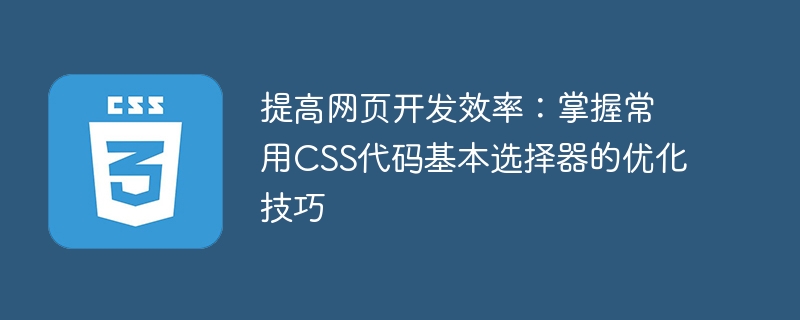

Improve the efficiency of web development: Master the optimization skills of basic selectors of commonly used CSS codes
Introduction: In web development, CSS is an indispensable part. Mastering the basic selectors and optimization techniques of commonly used CSS codes can improve development efficiency, reduce the amount of code, and make web pages load faster. This article will introduce some commonly used basic selectors of CSS code and their optimization techniques to help developers better optimize web pages.
1. Basic selector
Optimization tips: Avoid using other selectors before the element selector, which can improve the efficiency of the selector. For example, instead of using the selector for "div p", write separate selectors for "div" and "p".
Optimization tips: Using class selectors can reduce the amount of code and the possibility of style conflicts. In order to improve the efficiency of the selector, you can limit the scope of the class selector to avoid using too many class selectors in the global scope.
Optimization tips: ID selectors are generally more efficient than other selectors because IDs are unique. Therefore, try to use ID selectors to select elements and avoid using too many class selectors globally.
Optimization tips: Attribute selectors can improve the efficiency of the selector through the uniqueness of the attribute. Try to use unique attributes as selectors and avoid using wildcard selectors.
2. Optimization Tips
Summary: Mastering the basic selectors of commonly used CSS codes and their optimization techniques is very important to improve the efficiency of web development. By optimizing the use of selectors, you can reduce the amount of code, improve the efficiency of selectors, and make web pages load faster. Therefore, developers should continue to learn and master the usage skills of various basic selectors in CSS code to better optimize web development.
The above is the detailed content of Optimizing CSS selectors: common coding techniques to improve web development efficiency. For more information, please follow other related articles on the PHP Chinese website!




